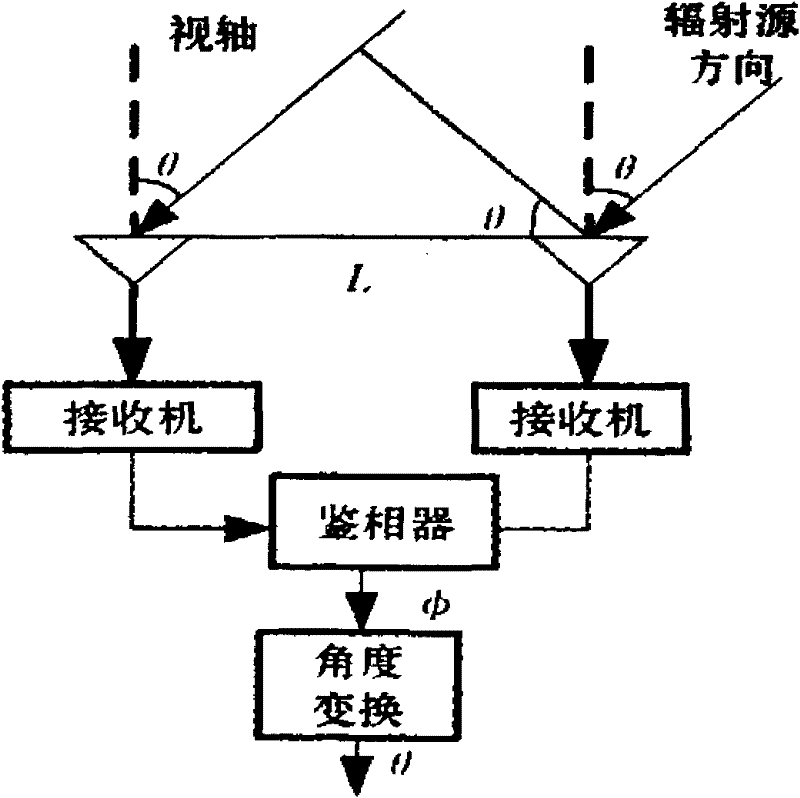Airborne single baseline Doppler-phase difference direction finding method
A phase difference and Doppler technology, applied in direction finders using radio waves, etc., can solve problems such as the inability to install receiving array elements, large errors in the angle of arrival, and limited estimation accuracy
- Summary
- Abstract
- Description
- Claims
- Application Information
AI Technical Summary
Problems solved by technology
Method used
Image
Examples
Embodiment Construction
[0047] It can be seen from formula (1) that the azimuth angle θ of the radiation source can be obtained by changing the angle of the phase information φ taken out of the phase detector.
[0048] 2. The ratio of the Doppler rate of change between the two array elements
[0049] The geometric relationship of the single-baseline Doppler-phase-difference direction-finding array applied to airborne is as follows: figure 2 shown. Assuming that the target is stationary or moving at a low speed, when the carrier aircraft moves at a constant speed v, the expressions of the Doppler frequency shift change rates at the two array elements are respectively:
[0050]
[0051]
[0052] In the formula: r i is the radial distance; v t is the tangential velocity.
[0053] Its ratio is:
[0054]
[0055] And by the law of sine, the ratio of the radial distance between the two array elements can be obtained as:
[0056] r 2 ...
PUM
 Login to View More
Login to View More Abstract
Description
Claims
Application Information
 Login to View More
Login to View More - R&D
- Intellectual Property
- Life Sciences
- Materials
- Tech Scout
- Unparalleled Data Quality
- Higher Quality Content
- 60% Fewer Hallucinations
Browse by: Latest US Patents, China's latest patents, Technical Efficacy Thesaurus, Application Domain, Technology Topic, Popular Technical Reports.
© 2025 PatSnap. All rights reserved.Legal|Privacy policy|Modern Slavery Act Transparency Statement|Sitemap|About US| Contact US: help@patsnap.com



